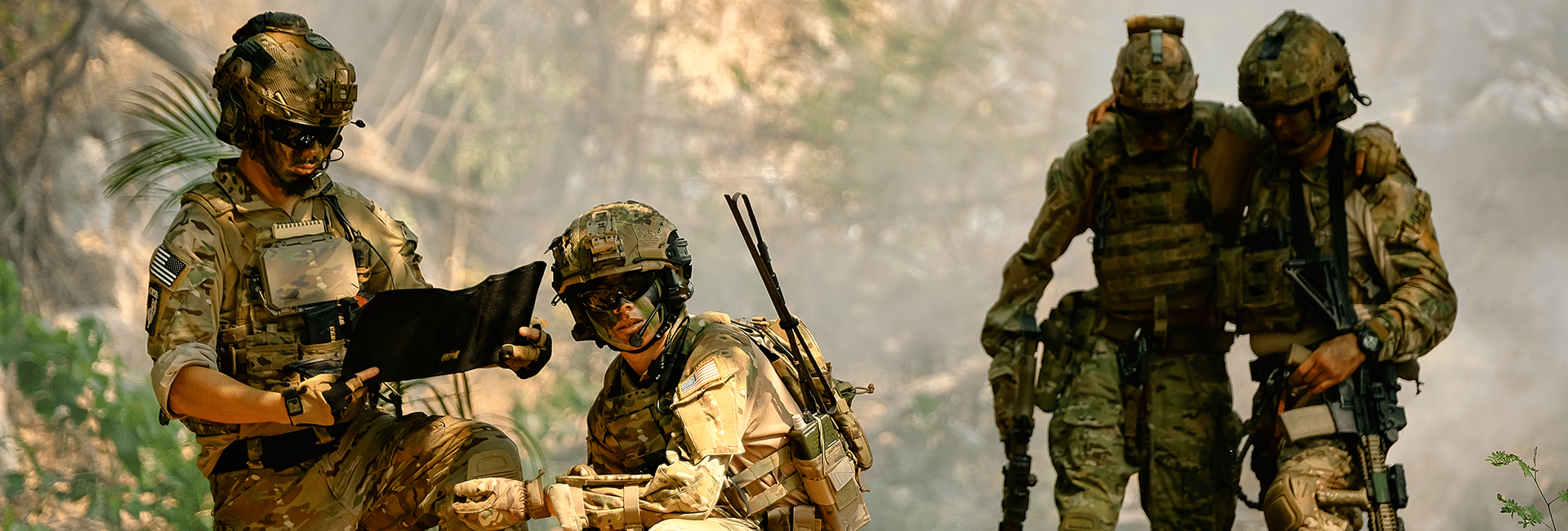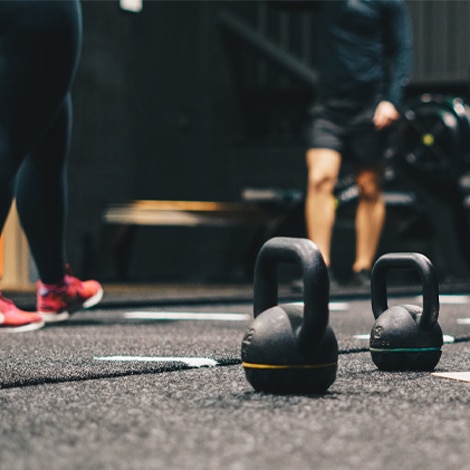By Richard Meldrum, Sport Science Consultant
The modern warfighter needs to be able to do a lot of things well to be effective in the field. This includes performing technical skills required by their specialty – such as defusing an incendiary device, building a bridge, or repairing a vehicle – and a broad range of physical capabilities such as running, climbing, and jumping. The latter must often be performed with additional load from equipment being carried in hands and on backs, as well as using protective gear.
To ensure the military’s most valuable asset – the Human Weapon System – is able to complete these tasks effectively, they must be physically prepared and mentally ready. In this article, we’ll explore how the latest technology can be used to predict warfighters’ performance and inform programming changes. We will also connect the dots between reaction time, readiness, and recovery.
REACTION TIME IN HIGH-CONSEQUENCE ENVIRONMENTS
In sports, the margin of victory is often so slim that the difference between winning and losing comes down to a couple of points on the scoreboard or a fraction of a second on the stopwatch. For example, on the only occasion which Usain Bolt lost to his archrival Justin Gatlin, the Jamaican lumbered out of the starting blocks. Despite Bolt’s legendary closing speed, he simply ran out of track before he could close the gap. In contrast, Gatlin’s reaction time got him out of the gate and into his drive phase quicker, which enabled him to open up a lead that was too great for the Jamaican legend to overcome.
Warfighters exist in a much higher consequence environment. At the risk of being too blunt, reacting first or last can determine who lives and who dies in combat. Reaction time isn’t all about the outcome when looked at through the lens of preparation. It can be used to compare one warfighter to another for selection purposes, and comparing an individual’s daily performance to his or her historical average can shed light on how well rested they are.
The link between reaction time and recovery isn’t merely an anecdotal one but has been investigated thoroughly by the exercise science community. A study published in the Asian Journal of Sports Medicine found that a single night’s bad sleep significantly impacted participants’ reaction time. The authors suggested that, “sleep serves a function of cognitive restitution, particularly in the maintenance of attentional mechanisms.”[1] Another study conducted by researchers from the University of Southern California, San Francisco found that when college basketball players were well rested, they shot free throws six percent more accurately than when they had inadequate sleep, while their three-point shooting accuracy went up nine percent.[2] This indicates that athletes don’t just react faster when they’re fully recovered but also execute fine motor skills involving hand-eye coordination more effectively.
These findings are just as applicable to warfighters as they are to athletes. Measuring reaction time in a field-specific scenario can be achieved by setting up speed gates such as in a shoot house or training course. Instructors can then create realistic drills in which servicemen and women must navigate obstacles and fire upon targets as fast as possible. How quickly they are able to do so can deliver insights that go far beyond the numbers themselves. Reaction time can tell commanders not only how quick a warfighter is on any given day but also indicates whether he is overtrained and/or under-recovered by comparing current and past performances.
ASSESSING THE EFFECTS OF LOAD CARRIAGE
Using speed gates to capture reaction times and a Tactical Performance Platform to assess them can also be beneficial when evaluating the impact of load carriage. Reaction time assessment is also useful for those working for emergency services. For example, a team of Australian researchers asked a group of police officers to complete four physical tasks they might have to perform while on duty – dragging a dummy to simulate removing an accident victim from a vehicle, a car exit followed by a five-meter sprint, a curb step down, and marksmanship – while wearing body armor of varying weight. The study concluded that while wearing such armor did increase musculoskeletal loading, “the addition of the ILAV [individual light armor vests] to normal station wear did not affect officer performance in any of the occupational tasks observed in this study.”[3]
Similar studies have shown that military body armor – which is typically heavier than the gear used by police officers and other emergency services personnel and is sometimes combined with different types of load carriage – can detrimentally impact performance. To this end, a paper published in Military Medicine recommended that warfighters carry no more than 30 percent of their total body weight so that their reactions and overall task completion time are not adversely impacted.[4]
CONNECTING THE DOTS BETWEEN REACTION TIME, RECOVERY, AND READINESS
Such experiments show the benefits of utilizing speed gates to time tactical athletes and gauge their reaction times in realistic scenarios they might encounter while in the field. A Tactical Performance Platform can be utilized to take such analysis further. Overlaying reaction and task completion times with heart rate variability (HRV), sleep, and activity data can give performance and medical staff a better sense of which types and combinations of tasks prepare operators to perform optimally.
Using red-flag thresholds, they can also begin to see which types of programming lead to sub-par outcomes and how these correlate to potential under-recovery. Commanders can then make changes to the type, duration, and intensity of upcoming training that take day-to-day readiness into account. Doing so will enable personnel to improve skill acquisition, develop speed, endurance, power, and other physical qualities more efficiently and achieve better results in mission-specific tasks. A well-recovered warfighter is more likely to react faster, think clearer, and act more decisively than one who is run down. Technology can help tactical units distinguish between the two and be used to educate individual servicemen and women on when it’s time to push harder or back off and focus on recovery.
IF YOU ENJOYED THIS ARTICLE, YOU MAY ALSO LIKE…
H2F in the Military Part 1: Using Data to Individualize Large Scale Human Performance – the History of H2F
VIDEO: The Air Combat Group Fighter Fit Program | Australian Defence Force RAAF
Women Leading from the Front in Medicine, Sports, and the Military
[1] Morteza Taheri and Elaheh Arabameri, “The Effect of Sleep Deprivation on Choice Reaction Time and Anaerobic Power of College Student Athletes,” Asian Journal of Sports Medicine, March 2012, available online at https://www.ncbi.nlm.nih.gov/pmc/articles/PMC3307962/.
[2] Cheri D. Mah et al, “The Effects of Sleep Extension on the Athletic Performance of Collegiate Basketball Players,” Sleep, July 1, 2011, available online at https://www.ncbi.nlm.nih.gov/pmc/articles/PMC3119836/.
[3] Ben Schram et al, “Comparing the Effects of Different Body Armor Systems on the Occupational Performance of Police Officers,” International Journal of Environmental Research and Public Health, May 2018, available online at https://www.ncbi.nlm.nih.gov/pmc/articles/PMC5981932/.
[4] Rebecca L Jaworski et al, “Changes in Combat Task Performance Under Increasing Loads in Active Duty Marines,” Military Medicine, March 2015, available online at https://pubmed.ncbi.nlm.nih.gov/25747650/








